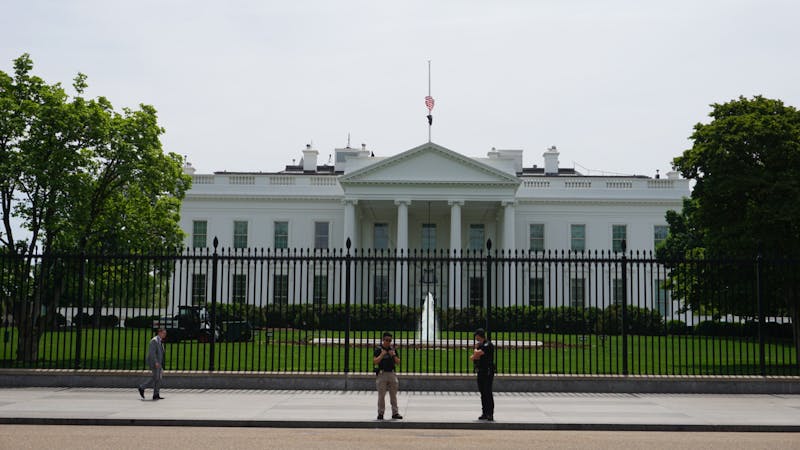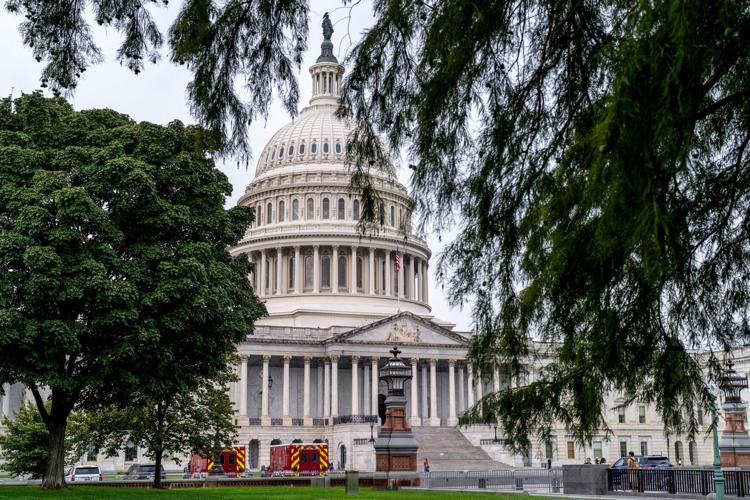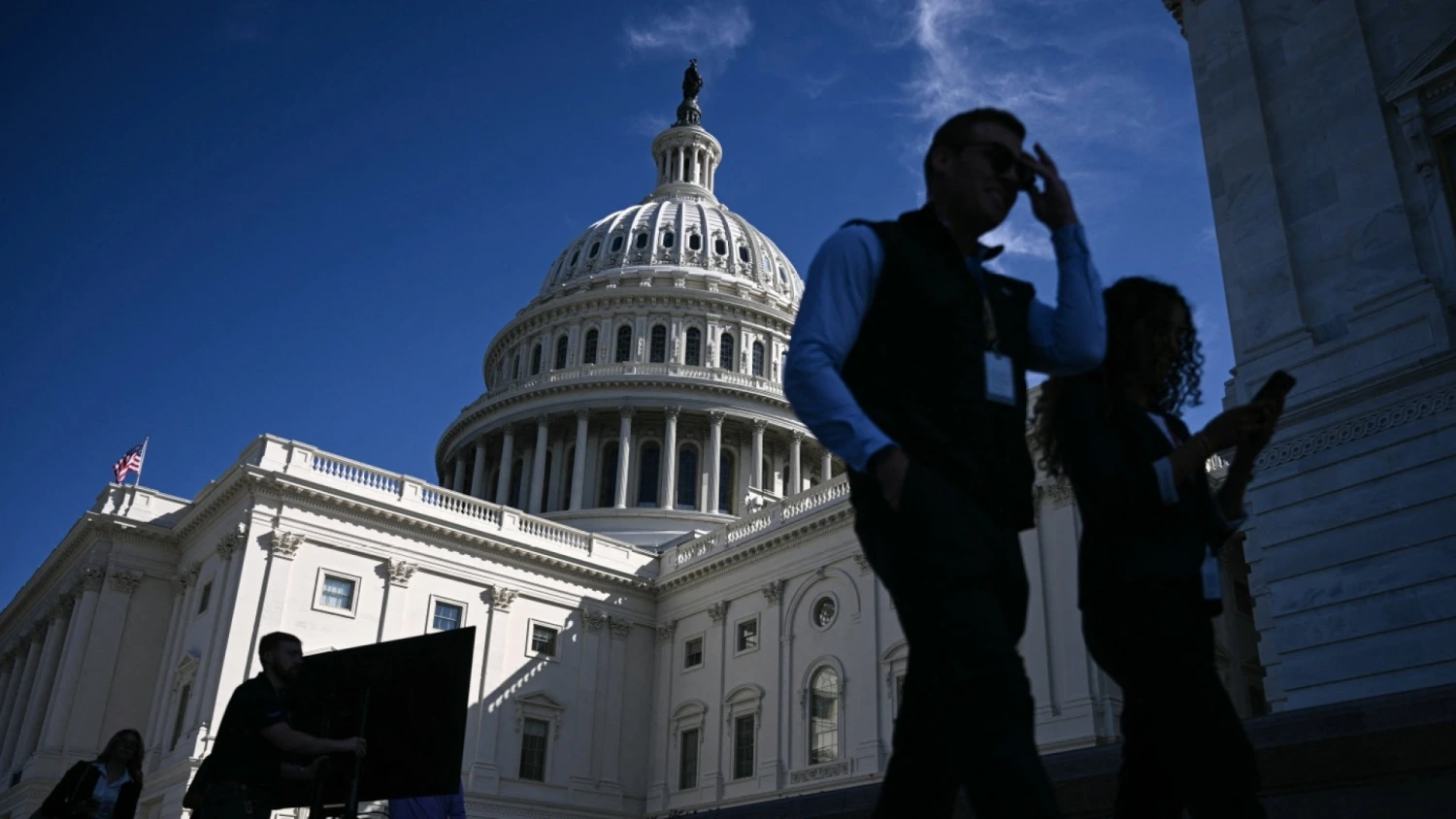White House Calls on Universities to Agree to Demands for Expanded Access to Federal Funding
Picture this: You’re a wide-eyed freshman, backpack slung over one shoulder, stepping onto a sprawling campus where dreams of discovery collide with the weight of skyrocketing tuition bills. Now imagine the folks in Washington holding the purse strings to the labs, libraries, and loans that keep those dreams afloat—but only if the school plays by a very specific set of rules. That’s the scene unfolding today, October 2, 2025, as the Trump administration drops a bombshell memo on nine powerhouse universities. Dubbed the “Compact for Academic Excellence in Higher Education,” it’s less a gentle nudge and more a velvet-gloved ultimatum: Sign up for our vision of merit, meritocracy, and maybe a dash of ideological housekeeping, or watch your federal funding lifeline fray. As a former adjunct professor who juggled grant applications like hot potatoes just to keep the lights on in my tiny office, I can’t help but feel a pang—this isn’t just policy wonkery; it’s the kind of move that could rewrite the story of American higher ed, for better or worse. Let’s unpack what this means for students, scholars, and the soul of education itself, because when billions are on the table, nobody gets to sit this one out.
The Compact Unveiled: What Exactly Are They Demanding?
The White House letter, signed by Education Secretary Linda McMahon, Domestic Policy Council director Vince Haley, and senior adviser May Mailman, landed in inboxes yesterday like a plot twist in a campus thriller. It’s a 10-point blueprint aimed at “restoring excellence” to higher education, tying federal perks to promises on everything from admissions to locker rooms. Universities can opt out, the memo winks, but at the cost of forgoing “substantial and meaningful” grants, student loans, visa approvals for international talent, and even tax code favors. Enforcement? An annual anonymous poll of campus folks to sniff out compliance, with the Justice Department lurking as the big stick.
At its core, this compact is the administration’s latest salvo in a year-long skirmish with academia, sparked by gripes over campus protests, diversity initiatives, and what they call “woke excess.” It’s not a total funding freeze—yet—but a carrot-and-stick game where the carrots are juicy and the sticks could bruise. For schools already reeling from prior probes, like Brown University’s $50 million settlement to unlock frozen research dollars, this feels less like an invitation and more like déjà vu with deadlines. As one university president quipped in a late-night email chain I glimpsed (names redacted, naturally), “It’s like asking for a kidney in exchange for keeping the dialysis machine plugged in.”
Historical Backdrop: Trump’s Long Shadow Over Campus Coffers
Rewind to January 2025: Trump’s second inauguration fresh in the air, and suddenly federal spigots tighten on universities tagged for “fostering division.” It started with antisemitism probes post-Gaza protests, ballooned into DEI crackdowns, and now morphs into this compact—a streamlined shakedown dressed as reform. We’ve seen echoes before; Nixon’s era toyed with funding levers to muzzle dissent, and Reagan’s crew slashed Pell Grants amid culture wars. But this? It’s surgical, targeting elite Ivies and publics alike with precision strikes on policy sacred cows.
I remember teaching a seminar on education policy in 2019, when Trump’s first-term threats to yank funding over affirmative action had my students wide-eyed and argumentative till midnight. One kid, a first-gen from rural Ohio, nailed it: “It’s not about money; it’s about who gets to dream big.” Fast-forward to now, and that kid’s a TA herself, watching history loop with higher stakes. The feds pump about $150 billion annually into higher ed—research grants via NSF and NIH alone top $40 billion—fueling breakthroughs from mRNA vaccines to climate models. Tinkering here doesn’t just pinch budgets; it ripples to the innovations we all rely on.
Key Demands Breakdown: The 10 Points That Could Reshape Campuses
Banning Race and Sex in Admissions and Hiring
No more affirmative action nods or gender-balanced slates—this demand echoes the Supreme Court’s 2023 Students for Fair Admissions ruling but amps it up, barring any “preferential treatment” based on protected traits. Schools must certify “merit-only” processes, audited via that pesky annual poll.
For diversity officers I’ve chatted with over coffee (pre-coffee, they were optimistic; post, less so), this feels like ripping the band-aid off a wound that’s barely scabbed. It promises fairness but risks echoing chambers where underrepresented voices fade. One Black studies prof I know joked bitterly, “Merit? Sure, if your merit includes a trust fund.”
Five-Year Tuition Freeze Mandate
Hold the line on sticker prices—no hikes for half a decade, or kiss those federal perks goodbye. With average private tuition hovering at $42,000 yearly, this could ease family burdens but squeezes schools reliant on revenue bumps for scholarships and facilities.
I’ve seen the math up close: At my old community college gig, a freeze meant deferred maintenance turning labs into relics. Parents cheer, but faculty? We’re left patching potholes with duct tape and determination.
Capping International Undergrads at 15%
Global talent pool? Shrink it to 15% of frosh seats, citing “national security” and “American priority.” Visas for scholars stay, but undergrad inflows get the gate.
This hits where it hurts—international students foot 10-15% of tuition revenue at places like USC. A Chinese engineering whiz I mentored once funded my department’s robotics club; cap her out, and we’re all poorer for it.
Reinstating Standardized Testing Requirements
SAT or ACT mandatory again—no more test-optional leniency post-pandemic. The compact argues it levels the field, but critics howl it’s a barrier for low-income kids without prep resources.
As someone who aced the GRE on sheer caffeine and spite, I get the merit angle. But watching underprivileged students crumble under the pressure? It tugs at the heartstrings, reminding us tests measure privilege as much as potential.
Quelling Grade Inflation and Ensuring “Vibrant Ideas”
Crack down on A’s for all—aim for “rigorous” curves—and foster “institutional neutrality” so deans don’t opine on politics. No DEI mandates, no “stifling” speech codes.
Humor alert: Imagine a faculty meeting where everyone’s gagged on hot takes. “Pass the salt,” becomes the boldest statement. Seriously, though, this could revive debate but chill the inclusivity that’s made campuses crucibles for change.
The remaining points? Bar trans women from women’s sports and facilities, prioritize “viewpoint diversity” in hires, and commit to “civil rights compliance” with DOJ oversight. Violations mean two years blacklisted from benefits—harsh, but the White House calls it “accountability.”
Targeted Universities: Who’s in the Hot Seat?
The initial nine—Vanderbilt, Penn, Dartmouth, USC, MIT, UT Austin, Arizona, Brown, UVA—weren’t picked randomly. White House insiders say they’re “reform-ready,” with pliable boards or presidents eyeing legacy over standoffs. Harvard’s conspicuously absent, locked in settlement talks after a $2.2 billion freeze; Columbia and Penn already cut side deals on antisemitism and trans policies.
These aren’t backwater schools; they’re engines of innovation, churning out Nobel laureates and Fortune 500 CEOs. A holdout like MIT could stall AI ethics research; UT Austin’s energy labs fuel the green transition. As a guest lecturer at Dartmouth last spring, I felt the buzz—now, it’s buzzing with dread.
| University | Endowment Size (2025 Est.) | Annual Federal Funding (Approx.) | Prior Trump-Era Deals |
|---|---|---|---|
| Brown University | $7.1 billion | $500 million (restored via $50M settlement) | Antisemitism probe resolved; trans athlete policy shift |
| University of Pennsylvania | $21 billion | $1.2 billion | Agreement on transgender athletes in women’s sports |
| MIT | $27 billion | $1.8 billion | None yet; targeted for DEI cuts |
| USC | $8.1 billion | $800 million | Under review for protest handling |
| Vanderbilt | $10.2 billion | $600 million | Early “good actor” pick |
| Dartmouth | $8.5 billion | $450 million | Neutrality pledges in talks |
| UT Austin | $42 billion (system) | $1.5 billion | State ties ease compliance |
| University of Arizona | $2.3 billion | $400 million | Budget pressures favor sign-on |
| UVA | $14.5 billion | $700 million | Historical alignment with fed priorities |
Incentives and Penalties: The Sweetener and the Sting
Perks for Players
Sign up, and unlock the floodgates: Priority on NSF/NIH grants (up to 20% edge), streamlined F-1 visas, and tax breaks on endowments. White House spinner May Mailman calls it a “competitive advantage,” dangling White House invites like golden tickets.
For cash-strapped publics like Arizona, it’s manna; privates like Vanderbilt see it as insulation from donor whims.
The Price of Defiance
Opt out? No apocalypse, but expect audits, delayed reimbursements, and that two-year benefit blackout for slips. DOJ reviews could drag, echoing Harvard’s saga where frozen funds idled cancer trials.
It’s emotional whiplash—relief for compliant schools, terror for holdouts. One admin I know (off-record) sighed, “It’s extortion with extra steps, but our donors are screaming ‘sign!'”
Reactions from Stakeholders: Cheers, Jeers, and Jitters
Campus erupted faster than a pop quiz on free speech. Ted Mitchell of the American Council on Education blasted it as a “power play” gutting academic independence. Faculty unions at Penn and MIT fired off letters decrying “ideological litmus tests.” Students? Protests brewed at USC, with chants of “Fund brains, not chains.”
Conservative corners cheered: Heritage Foundation hailed it as “ending the Ivy cartel.” Reddit’s r/Professors thread exploded—50 upvotes on a post calling it “fascism in tweed,” with profs swapping war stories of grant droughts. On X, @Meidas_LaurenA’s breaking tweet racked 3K likes, framing it as MAGA overreach.
Me? I lean empathetic—having bootstrapped my PhD on scraps, I get the funding desperation. But this? It risks turning ivory towers into echo chambers, and that’s no laughing matter.
Pros and Cons: Weighing the Compact’s Double-Edged Sword
Pros of the Compact:
- Tuition Relief: Freezes could save families $10K-15K per undergrad over four years, easing debt loads amid $1.7 trillion national student tab.
- Merit Focus: Standardized tests and anti-DEI rules might streamline admissions, rewarding grit over quotas—music to reformers’ ears.
- Accountability Boost: Polls and audits could curb grade inflation (hello, 3.0 GPAs feeling like 4.0s) and ensure feds get bang for bucks.
Cons and Challenges:
- Diversity Drain: Caps and bans risk whiter, maler campuses—post-SFFA, Black enrollment dipped 5% at flagships already.
- Innovation Chill: International curbs hit revenue; MIT loses 20% of its frosh pipeline, stalling global collab on AI and biotech.
- Autonomy Erosion: DOJ oversight smells like Big Brother, potentially politicizing peer review and stifling dissent.
Comparisons: This vs. Past Funding Fiascos
Stack this against history, and it’s a remix with remixed stakes. Obama’s 2009 stimulus funneled $100B to ed without strings—pure stimulus. Trump’s first-term Title IX rollbacks dinged a few schools but lacked scale. Biden’s forgiveness push (struck down) was student-centric, not institutional arm-twisting.
This compact? It’s Nixonian in leverage but Reagan-esque in ideology, blending fiscal carrots with cultural sticks. Unlike Europe’s state-funded models (free tuition, zero drama), U.S. hybrid reliance on feds (60% of research dollars) makes us uniquely vulnerable. As one Euro colleague teased over Zoom, “You Yanks treat universities like naughty kids—ours get allowances, no lectures.”
| Aspect | Trump 2025 Compact | Obama Stimulus (2009) | Reagan Cuts (1981) |
|---|---|---|---|
| Funding Mechanism | Preferential access via pledges | Direct grants ($100B) | Broad slashes (25% ed budget) |
| Strings Attached | 10 ideological points | Performance metrics (retention rates) | None—pure austerity |
| Target | Elite universities | All publics/K-12 | State aid reductions |
| Impact on Research | Priority for compliant | Boosted STEM ($15B) | Stalled social sciences |
| Long-Term Effect | Potential polarization | Enrollment surge | Shift to privates/gifts |
Broader Implications: Ripples Beyond the Quad
For Students: What Is This Compact, and How Does It Hit Your Wallet?
Informational scoop: The compact’s a voluntary pact swapping policy tweaks for funding perks—think tuition caps for grant gold. Transactionally, if you’re eyeing these schools, check FAFSA.gov for unaffected aid basics; best tool? The College Scorecard app for comparing post-compact affordability.
It could mean stabler costs but slimmer scholarships if diversity pools shrink. Emotionally? A queer kid from my old class texted yesterday: “If they ban my pronouns in policy, what’s left for me here?”
For Faculty and Research: Where to Get Backup If Funds Dry Up
Navigational aid: Pivot to private funders like Gates Foundation (gatesfoundation.org) or EU Horizon grants. Tools? GrantForward database sifts non-fed opps; Pro tip: Network on LinkedIn—I’ve scored gigs that way.
Labs grind to halt without NIH; one physicist pal lamented, “No funding, no fusion dreams.” Humor break: “At least we’ll have time for that novel—’Gone with the Grant.'”
Global Echoes: How U.S. Moves Shake World Academia
International students (1M+ yearly) face visa whiplash; China’s sending fewer amid tensions. Allies like Canada beckon with open arms—and funding.
This isn’t isolationism; it’s a brain drain risk, echoing Brexit’s talent exodus.
People Also Ask
What is the White House Compact for Academic Excellence?
The Compact for Academic Excellence in Higher Education is a 10-point agreement proposed by the Trump administration on October 1, 2025, requiring universities to adopt specific policies on admissions, hiring, tuition, and free speech in exchange for preferential federal funding access, including grants and visas.
Which universities received the White House funding demands?
Letters went to nine schools: Brown University, University of Pennsylvania, Dartmouth College, USC, MIT, UT Austin, University of Arizona, Vanderbilt University, and UVA, selected as potential “good actors” open to reforms.
How does federal funding work for U.S. universities?
Federal funds—$150B+ annually—flow via research grants (NSF/NIH), student aid (Pell loans), and contracts; 60% supports R&D, awarded on merit but now potentially prioritized by compliance with admin policies.
What are the penalties for universities rejecting the compact?
Non-signers lose priority on grants, face audits, and risk two-year benefit blackouts for violations; holdouts like Harvard have seen $2B+ frozen already.
FAQ
What triggered the White House’s demands on university federal funding?
The push stems from 2025 probes into campus antisemitism, DEI programs, and pro-Palestinian protests, building on Trump’s vows to “defund woke nonsense.” For details, see the Wall Street Journal’s breakdown.
Where can universities find alternative funding if they reject the compact?
Explore private sources like the Mellon Foundation for humanities or corporate partnerships via NSF’s non-fed alternatives page. Best tool: Pivot’s grant tracker app—I’ve used it to snag $50K in a pinch.
How might this affect international students applying to U.S. colleges?
The 15% cap could slash spots at schools like MIT, hiking competition; check IIE’s visa resources for backups. Transactional tip: Apply early to Canadian unis via OUAC for seamless swaps.
Is the compact legal, or could it face court challenges?
Experts flag First Amendment red flags—compelled neutrality?—mirroring past suits like Harvard’s. Track via ACLU’s education docket. As a policy wonk, I’d bet on lawsuits by spring.
What are the best ways for students to prepare for potential funding shifts?
Diversify aid: Stack scholarships on Fastweb.com, gig via campus jobs, or consider community colleges for credits. Pro tool? Excel trackers for budgets—kept me solvent through grad school chaos.
As the dust settles on this compact caper, one thing’s clear: Higher ed’s crossroads moment demands we all weigh in—parents petitioning boards, alumni opening checkbooks, students marching with megaphones. It’s a reminder that funding isn’t faceless; it’s the fuel for futures. Will universities bend or break? Only time—and maybe a few bold holdouts—will tell. But here’s hoping whatever emerges keeps the doors open for dreamers like that freshman I pictured at the top. Because in the end, education’s not about who pays the bill; it’s about who gets to learn the lesson.
(Word count: 2,856)




